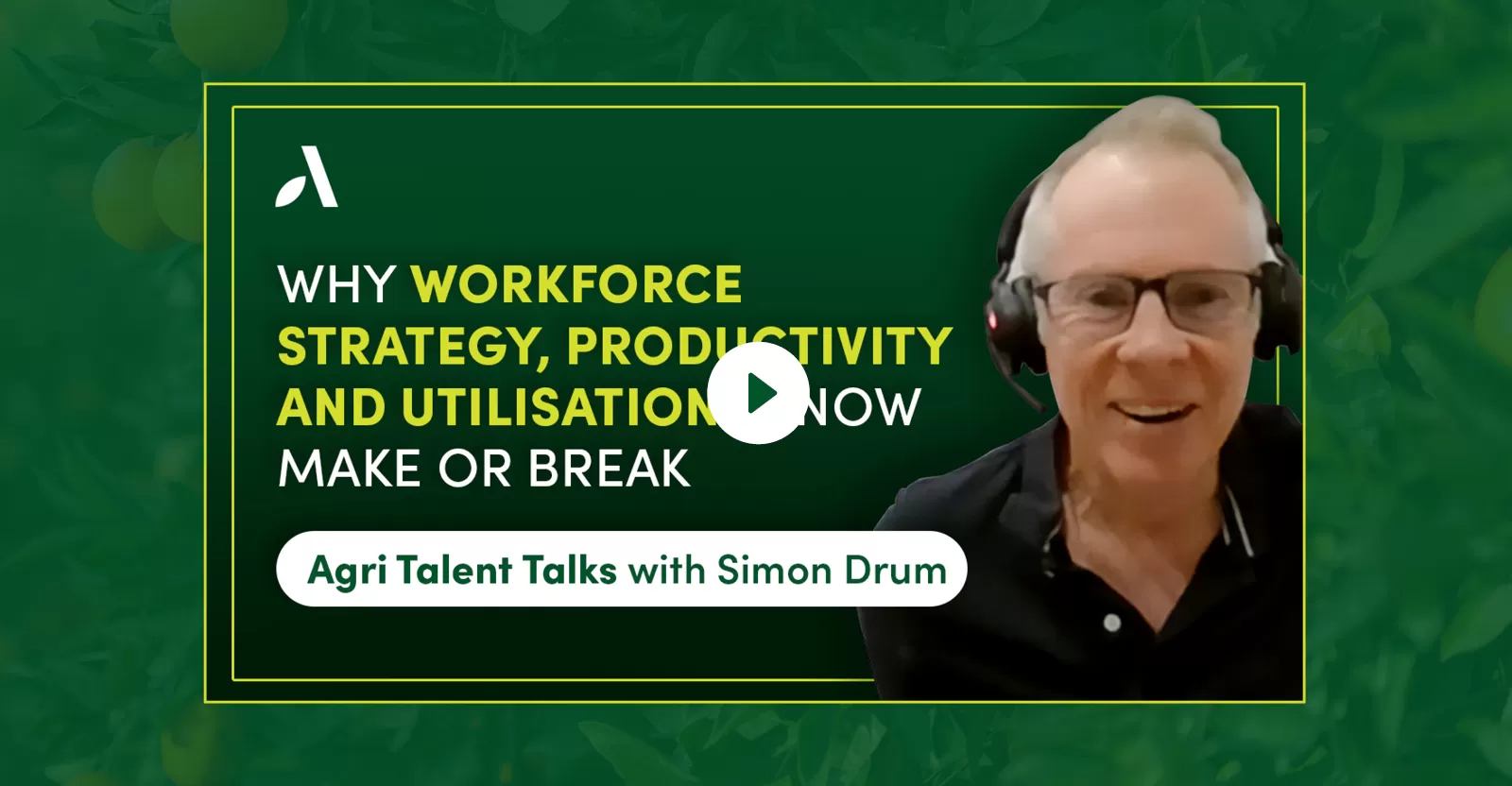
Agri Talent Talks is back – and this time we’re hearing from Simon Drum, principal advisor at PSVC Advisory and a respected voice in agricultural strategy, operations and workforce planning. Drawing on executive experience across vegetable production and agribusiness leadership, Simon works with farming operations to optimise their workforce strategies, with a particular focus on horticulture.
In this candid and insightful interview, Simon unpacks the margin and workforce pressures reshaping Australia’s fresh-food sector – and explains why a sharper, more deliberate approach to horticulture recruitment could determine which businesses thrive over the next decade.
The real story behind margin pressure
While margin and profitability pressures are nothing new to the industry, Simon says they’re more acute than ever. Domestic retail pricing, global export challenges and rising input costs – including fertiliser, chemicals and labour – are all converging to squeeze Australia’s fresh-food producers. It’s a tough situation to be in, Simon observes – “Quite a lot of these businesses wouldn’t have made a genuine profit in four or five years”. This impacts not just on-site machinery and equipment investment, but also innovation and labour strategy. And that’s where the conversation around horticulture recruitment begins to shift.
Productivity over price – rethinking seasonal workforce value
One of Simon’s most compelling points is the call for producers to move beyond hourly labour costs when planning their seasonal workforce. Instead, he urges a deeper focus on capability and utilisation. “A 5% cheaper rate doesn’t matter if the workers are 30–45% less productive,” he says. “That’s where the real labour cost is hidden.”
Simon calls out a critical knowledge gap, in that many agribusinesses don’t yet have the HR sophistication or training frameworks in place to extract maximum value from their seasonal workforce. According to Simon, fixing this is key to driving down labour costs without compromising quality.
Permanent roles – where the value is (and isn’t)
In a highly competitive market for permanent hires, Simon encourages producers to ask which roles truly drive performance. While CFOs and compliance managers are necessary, he argues the highest value often comes from the blue-collar roles – growers, irrigation managers and technical operations staff. These are the roles that directly impact crop performance, waste and profitability.
This sharper focus is crucial for horticulture recruitment strategies. Businesses need to identify their mission-critical roles and invest accordingly – even if that means looking offshore for talent.
Skilled migration – an essential solution
Simon is clear on the fact that skilled migration will remain essential in 2025. He believes programs such as the PALM scheme will stay, and the challenge lies in navigating complexity, rather than availability. “If the imperative is to get the right capability into the job, then we need to look really broadly,” he says. “And that includes offshore.” Simon sees Australia’s lifestyle, safety and opportunity continuing to attract global talent – making it a viable path for critical on-farm roles.
Mechanisation isn’t a silver bullet
With CapEx constraints limiting investment in automation, many producers are placing high hopes on mechanisation and AI. It’s a subject on which Simon’s view is pragmatic. “Even if we adopt more ag tech,” he says, “we’ll still need people to operate it – and they’ll need different skills.” Simon sees workforce planning and tech investment as parallel, not competing strategies. Get both right, and businesses will unlock significant competitive advantage.
Where to from here for horticulture businesses?
Overall, Simon’s advice to agribusiness leaders is simple – focus on what you can control. Refine production systems. Build internal training capabilities. And get crystal clear on what matters most in your horticulture recruitment strategy. Above all, he calls for a mindset shift from managing “labour costs” to investing in workforce productivity. “It’s your crop. It’s your safety record. It’s your job,” he says. “You’ve got to get capability up, and then drive utilisation. That’s where the future is.”


